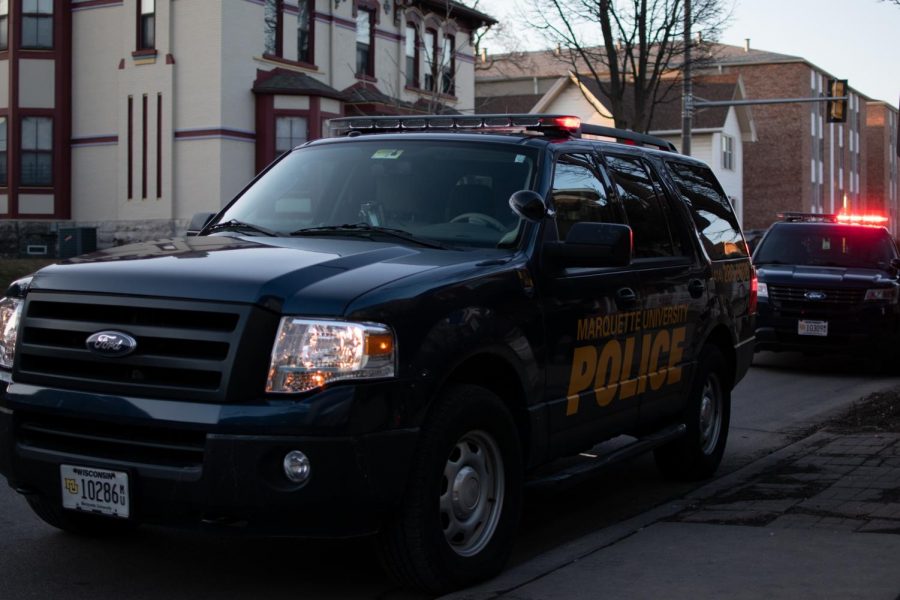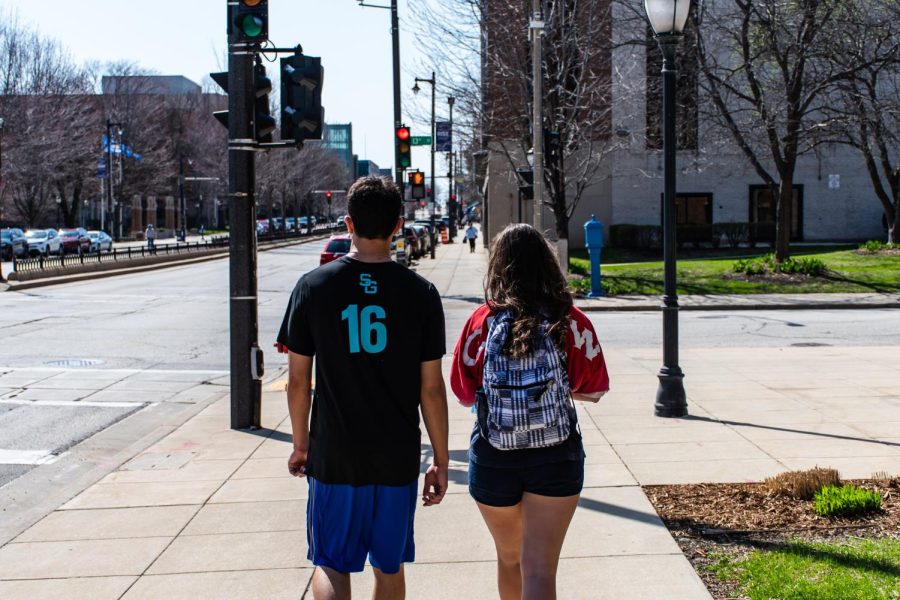As September draws to a close, Milwaukee’s death toll continues to rise. Since the beginning of the year, 143 homicides have been committed— which is seven more than last year at this time, putting the city on pace to exceed last year’s record-breaking total of 189 killings.
Around 54% of Milwaukee homicides last year occurred in a 30-block radius on the north side, however, some were miles or less from Marquette’s campus.
Safety threats on campus have continued, as a Sept. 24 Marquette Police Department report informed students of a dark-colored sedan on-campus shooting gel/water beads at pedestrians from a gel gun.
In MUPD’s email to students, they also disclosed that the Milwaukee Police Department received reports of four similar incidents in the downtown Milwaukee area around the same time.
After hearing of these reports, MUPD responded by utilizing the on-campus cameras.
“MUPD is utilizing more than 1,100 cameras around campus to monitor for the car driven in these incidents and is investigating all leads and student reports,” said an email from Marquette’s Police Department.
Despite MUPD monitoring the situation with cameras, Brette Browne, a junior in the College of Arts & Sciences, said she doesn’t feel safe around campus when these “bizarre” safety alerts occur.
“Since I live so far from the library, this makes me feel as though I shouldn’t be walking home alone from the library at night, even though campus should feel safe,” Brown said.
In regard to where crime occurs in Milwaukee, there is no distinct answer. Aleksandra Snowden, an associate professor in the department of social and cultural sciences, said crime occurs in “clusters across space” which means it can be highly concentrated in some areas, blocks and street segments.
“Environmental criminology offers a helpful lens through which to understand these hot spots of crime,” Snowden said.
Environmental Criminology explores “how actual criminal events involve interactions between motivated individuals and social, economic, legal, and physical surroundings,”
What drives Milwaukee’s influx of crime throughout the past two years can be explained through a variety of factors.
Many criminology experts correlate last year’s record-high death toll with the COVID-19 pandemic, as crime went up 95% from 2019 to 2020. However, there was also an increase in crime nationwide in 2020, as a study of around two dozen cities found that on average, homicides went up 32%.
These influences may have carried over into 2021, however, Snowden said there are “many explanations such as poverty, income inequality and firearm availability.”
Anna Steel, a junior in the College of Arts & Sciences, correlates these high crime rates to the strains brought on by the pandemic and other social factors.
“I think they’re high because the country is battling itself and there is a lot of unrest nationwide due to covid and politics,” Steel said.
Although the exact root of this crime has yet to be determined, Steel said she is going to be more aware of her surroundings after learning about Milwaukee’s grim statistics.
“I’ve always been cautious when alone but now I don’t think I will go anywhere by myself,” Steel said.
In 2019, Marquette reported 1,308 safety-related incidents involving students on campus, near campus or on other Marquette-affiliated properties, which boils down to around 25 reports per week.
With high reports of on-campus crime, Steel said she hopes the Marquette University Police Department will continue to do its best in keeping the campus clear of safety threats.
To have a better understanding of crime in Milwaukee and protect oneself from it, Snowden recommends taking classes offered by the Criminology and Law Studies faculty.
“The knowledge acquired through the CRLS classes will broaden students’ understanding of crime, crime patterns and the ideas behind crime reduction and crime prevention,” Snowden said.
Students who fear for their safety at any time on campus should contact MUPD by calling (414) 288-1911 or use one of more than 450 blue light phones around campus or on the mobile blue light feature on the Eagle Eye app.
This story was written by Claire Driscol. She can be reached at claire.driscol@marquette.edu






